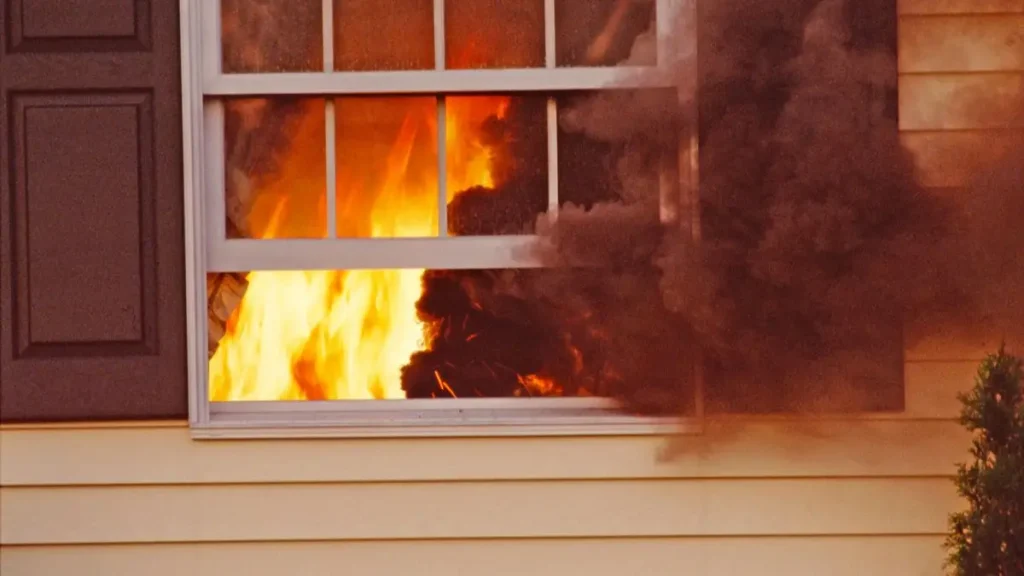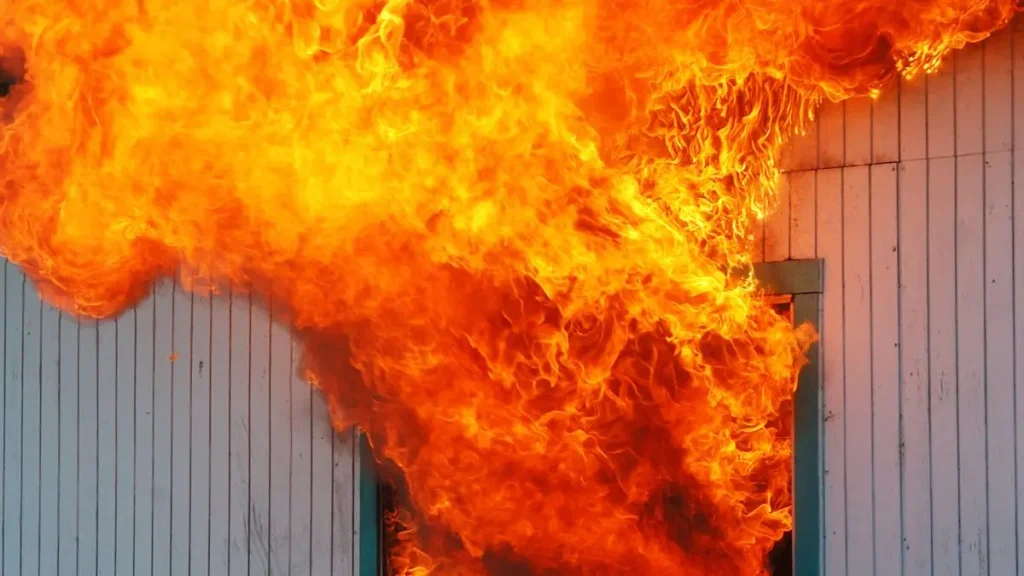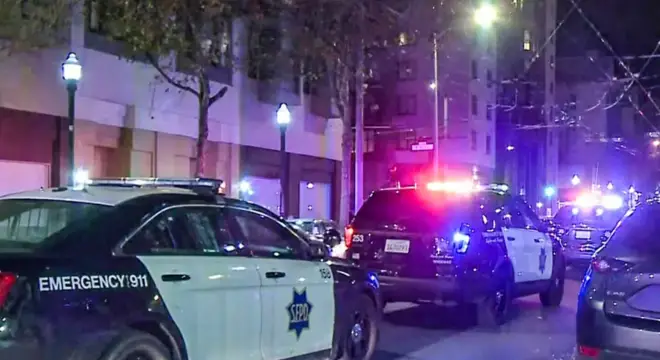Santa Rosa Firefighter Hospitalized After Responding to House Fire
I can’t imagine a worse way to start your Monday than waking up to the smell of smoke—especially at 3 in the morning. But that’s exactly what happened on Montclari Drive in Santa Rosa this week.
According to officials, the fire broke out in the early hours, tearing through the garage and attic of a family home in Rincon Valley. Thankfully, everyone inside made it out safely. But one firefighter wasn’t as lucky.
While battling the flames, they were injured and are now recovering. The details of the injury haven’t been made public, but any time a firefighter gets hurt, it hits differently. These are the people trained to walk into chaos while the rest of us run away from it.
The fire appears to have started in the garage and was likely caused by electrical equipment. It’s still under investigation, but early reports suggest it was accidental.
And here’s the real question we should all be asking: if this could happen in a quiet Santa Rosa neighborhood, what’s stopping it from happening on your street—or mine?
What do you think is the most overlooked fire risk inside homes today? Share your thoughts in the comments—I’d love to know what you’re doing to stay prepared.
Could Electrical Equipment in Your Garage Spark a Fire Too?
You’d be surprised how often it happens. A small piece of equipment—maybe a battery charger, an overloaded power strip, or something as common as a space heater—can end up lighting up your entire garage in flames.
In this Santa Rosa case, investigators say the fire likely started from electrical equipment in the garage. NBC Bay Area reported that the blaze was accidental, but caused serious damage. That’s what worries me most—how quickly something routine turns into a full-blown emergency.
And let’s be honest, how many of us use our garage like a second storage unit? I’ve seen garages packed wall-to-wall with power tools, holiday lights, paint cans—none of which mix well with exposed wires or old outlets.
If you’ve never thought twice about the plugs and cords in your garage, now’s the time.
Sometimes, you don’t even get the chance to react. In Peru, New York, one person lost their life before crews could even contain the blaze. These stories are heartbreaking, but they’re also wake-up calls.
What Happens Behind the Scenes When Firefighters Arrive?

You hear sirens. See flashing lights. But do you know what actually happens when firefighters pull up to a house fire like the one in Santa Rosa?
Let me walk you through it.
The moment crews arrived at Montclari Drive, they had to assess where the fire was coming from and how fast it was spreading. In this case, it had already hit the garage and attic. That’s a dangerous combination—garages often contain fuel and chemicals, and attics trap heat, making fires burn hotter and longer.
Firefighters move fast, but they’re also calculating risk with every step. One wrong move and they’re inside a collapsing structure or breathing toxic smoke.
I’ve spoken to fire officials in the past who say attic fires are some of the worst to fight. The heat rises fast, ventilation is limited, and the roof can weaken quickly under pressure.
And that’s likely where things went wrong. One firefighter was injured during the response. We don’t know the exact details yet, but it’s a reminder that these men and women are putting their bodies on the line to protect homes like yours and mine.
So the next time you hear about a fire, remember—it’s not just property that’s at risk. It’s people.
Just a few weeks ago, two firefighters were injured in Suitland while responding to a tragic house fire that took a young boy’s life. It’s a brutal reminder of how high the stakes are when crews arrive on scene.
Are Santa Rosa Home Fires on the Rise?
I always like to zoom out after an incident like this. One fire is scary, sure—but is this part of something bigger?
Turns out, Santa Rosa and the wider Sonoma County area have seen a number of house fires recently. Many of them are accidental, caused by things like unattended cooking, faulty wiring, or overloaded outlets—just like this one.
You’d think wildfires would be the only concern in Northern California, but that’s not the full story. Structure fires—inside regular homes—have become a growing problem. And they’re not always in remote or neglected properties. This one happened in a quiet residential area at 3 a.m.
What does that tell you?
Fires don’t care if your neighborhood is nice or your house is new. If your wiring is old, your outlets are packed, or your smoke alarms are missing batteries, you’re playing with fire—literally.
I suggest taking this incident as a wake-up call. Not just for your own home, but for neighbors, friends, and family too.
I’ve been following several recent cases like this one, and what’s really helpful is staying plugged into real-time alerts and community updates—something I’ve found useful via local safety and emergency channels on WhatsApp.
6 Fire Safety Checks You Shouldn’t Put Off Any Longer
Let’s cut to it. If you’re reading this and haven’t done a home fire safety check in the last year, I’m talking to you.
This is the stuff that makes the difference between a close call and a full-on disaster:
- Unplug idle chargers: Don’t leave tool chargers or battery packs plugged in 24/7—especially in the garage.
- Avoid using daisy-chained power strips: If you’re plugging one extension cord into another, stop. That’s a fire hazard waiting to happen.
- Keep flammable items far from outlets: Paint cans, motor oil, cardboard boxes—store them safely and separately.
- Test your smoke and heat alarms: Not just whether they beep—check battery levels and expiration dates.
- Have a fire extinguisher in the garage and kitchen: And actually know how to use it. (Remember PASS: Pull, Aim, Squeeze, Sweep.)
- Schedule an inspection if your house is 20+ years old: Wiring degrades over time, even if you don’t see the damage.
None of these take more than 10 minutes. But they could buy you and your family precious time in an emergency.
What’s one fire safety habit you follow at home that others should too? Drop it in the comments—let’s learn from each other.
Behind the Helmet—What It Takes to Keep Firefighters Safe

Most of us see firefighters as heroes—and they are. But we don’t always understand just how much risk they take on every time that alarm goes off.
In this Santa Rosa fire, one firefighter ended up injured while trying to stop the flames from spreading. That’s not just part of the job—it’s a reality they prepare for, over and over again.
I’ve spoken with firefighters in the past who told me that garages and attics are among the most dangerous parts of a home. Why? The structure is weaker, the layout is unpredictable, and the smoke gets trapped quickly. Add in high heat and electrical hazards, and you’re talking about a situation that can turn deadly in seconds.
Even with all the gear—fire-resistant suits, oxygen tanks, heat-mapping cameras—it’s never 100% safe. Training helps, but so does public awareness. That means you and I also play a role in keeping them safe.
When homes are better prepared, when fires don’t start from preventable causes, the risk drops—for everyone.
So yes, we thank them. But let’s also support them in practical ways. That starts by making sure our homes don’t become the next call they have to respond to.
It’s not just Santa Rosa. A recent fire in Buffalo left seven people displaced, needing emergency aid from the Red Cross. The pattern is clear: home fires are happening more often—and they’re hitting regular families the hardest.
This Fire Could Happen to Anyone—Is Your Home Fire-Ready?
Here’s the part that stings a little: this Santa Rosa family did nothing wrong.
There was no arson, no negligence, no wild party gone wrong. Just electrical equipment in a garage doing what it wasn’t supposed to do.
That’s what makes it so real. It could’ve been your house. Or mine.
These incidents aren’t just headlines—they’re warnings. And while it’s easy to feel bad and move on, the smarter move is to act. Test the alarms. Clear the outlets. Talk to your kids about what to do in a fire. Make a plan.
You’ll probably never need it. But if you do, you’ll be glad you were ready.
Looking for more real-life fire safety stories and prevention tips? Explore our latest fire incident reports and safety guides on our website Build Like New.
Disclaimer: This article is for informational purposes only. Details are based on public reports and may change as investigations continue. Always consult local authorities or fire safety professionals for guidance.


